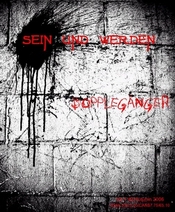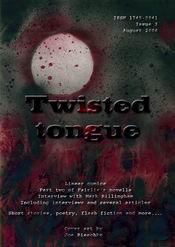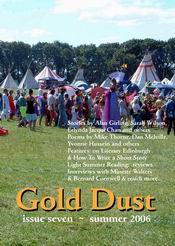Is your ezine likely to form a hard core of regular writers to which readers become loyal and, if so, how will such a trend affect the potential of new talent?
SUW: This is something I am very wary of, not least because Sein und Werden is so specialised in some ways, whilst being more general in others. The ideas behind it are concrete but the medium is flexible. I do not want potential contributors thinking there is some incestuous close-knit Werdenist community of writers and artists to the detriment of 'outsiders'. Yeah, we're incestuous but we welcome fresh blood too. I started the mag up because of certain writers and artists I came across. I won't publish them just because of who they are though. I publish them because they write what I am after. In a way I see Sein as an ongoing piece of artwork, a merging of different talents, which will evolve naturally. In order for this evolution to take place, there needs to be new names, new perspectives, new talent. I have never been short of wonderful submissions and I don't think I ever will be.
TT: Well so far, after a year, I do know that TT does have a handful of regular readers, just recently a few people have only just heard about TT and after seeing issue #4 they've ordered back issues too. The more loyal readers, the better it'll be for TT's authors, their pieces seen and read by large numbers … and of course payments will be available. As for how will it affect new talent - I presume there'd be more submissions (this has grown over each issue), which means there'd be more pieces to read making it harder to gain a place in the mag.
GIV: It already has. New talent is new talent. My magazine gives new talent a chance to become old talent. The core of regular writers is always changing.
GD: It is possible, but we will continue to consider each and every submission on its merits, so work from new authors is never overlooked.
What will be the long term effect of literary ezines on writers and literature itself?
SUW: Because of the accessibility of the web, it allows for linking to other writers, writing communities, forums, the sharing of ideas and creativity. One of the most rewarding things for me is when a reader writes to me in praise of some text or artwork (s)he's come across in Sein. What is even better is when contributors meet via Sein to work on something together. I've had other editors soliciting Sein contributors for work for their own zines (as I have done myself) and poets working with photographers for new poetry collections etc. To cut a long answer short then, I think ezines can help pave the way for writers when it comes to making contacts, which can only be a very good thing for writing communities and literature itself.
GIV: They will provide publishing credits for aspiring writers and a place to practice their craft.
GD: Literary ezines have given many previously unpublished but talented writers the confidence to realise that someone liked their work enough to publish it; and that feeling is worth its weight in gold in terms of encouragement and motivation. The downside is that there is more poor quality work finding its way into print. But overall the standard is high enough that literature is not being devalued as an art form via ezines.




